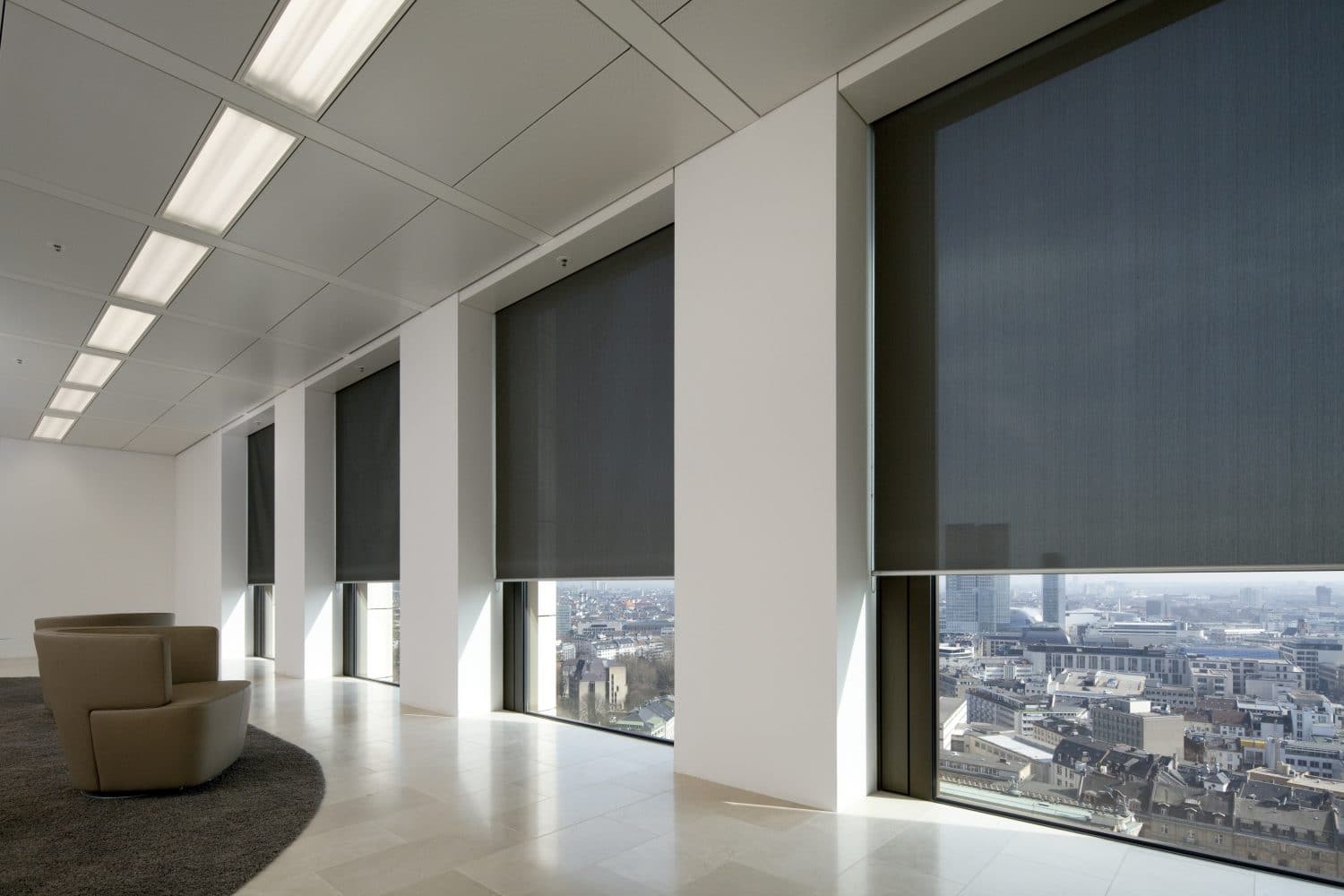
What is a metallised blind fabric? And is it more expensive than non-metallised?
Specifying the right type of blind fabric can be a tricky decision. From shading coefficient and TV values to the impact the blinds have on occupants inside the building, there are a host of considerations.
One of the most important aspects to think about is whether to opt for a metallised blind fabric or not. We discuss this topic in greater depth in one of our three RIBA-approved CPDs, ‘Improving Sustainability through Performance Solar Shading.’
And following the presentation, we’re regularly asked about the cost implications of using a metallised blind fabric over a non-metallised.
Therefore, in this blog, we explain exactly what we mean when we use the term ‘metallised fabric,’ what the benefits of such fabrics are and whether there is, in fact, a difference in cost.
What is a metallised blind fabric?
Firstly, for those who have not attended our CPD on the subject or have not come across the topic before, what exactly is a metallised blind fabric?
Put simply, it’s an extremely thin layer of reflective aluminium that is welded to the back of a blind fabric, similar to the way in which the inside of a crisp packet is manufactured.
The metallisation of the fabric reduces the amount of light and heat passing through the yarns, and our SilverScreen® fabric is the highest performing metallised fabric in the industry, reflecting up to 85% of the solar energy entering a building.
Why do we recommend metallised fabrics?
As you can imagine, a fabric with a performance of this level comes with a plethora of benefits.
- Visual comfort – Metallised fabrics are excellent at controlling glare and still providing a view to the outside, which is crucial for our health and wellbeing at work. In fact, ‘The Employee Experience’ study from 2018 found how 47% of employees surveyed felt “tired from the absence of natural light or a window at their office.”
- Thermal comfort – This is one of the biggest benefits of a metallised blind fabric. By reflecting most of the solar energy away from the building, the fabric prevents excess heat entering the space in the summer and escaping during the winter, helping control the internal temperature. To back this point up, we conducted an experiment at our head office in Farnham, comparing a metallised fabric with non-metallised. We compared the internal temperature of our kitchen on consecutive days last summer, ensuring the time and external temperature were consistent. On the first day, we tested the non-metallised fabric and the kitchen thermometer reading 26.4 degrees. The following day with the metallised blind fabric installed, the internal temperature was almost two degrees lower, reading 24.5 degrees. While a two-degree difference may not seem a great deal in the grand scheme of things, a change of this scale can still have a profound impact on our productivity levels. In our CPD mentioned above, we refer to a study in California which saw the productivity levels of employees in a call centre significantly impacted by subtle shifts in temperature.
- Maximising building efficiency – A cooler workspace will reduce the reliance on carbon-emitting HVAC systems and use of artificial lighting. Therefore, by controlling the internal temperature, metallised blind fabrics help to enhance the building’s sustainability credentials and lower the energy costs.
Is a metallised blind fabric more expensive?
As mentioned above, we’re regularly asked this question at the end of our CPD, and in short the answer is yes.
While it’s difficult to put a concrete figure on the cost, when compared with non-metallised fabrics of a similar quality, there is approximately a 15-20% uplift in cost.
However, when you take the potential savings on energy bills into account, it’s often wise to spend slightly more on the fabric.
Key consideration
Automation.
While the benefits of metallisation are evident above, the fabric will only work to its full potential when it’s paired with an automated system.
We explain the importance of this further in the second of our three RIBA-approved CPDs, ‘Introducing the Benefits of an Automated Shading System’. You can sign up to our next webinar here.
Alternatively, if you’d like to discuss metallised fabrics for your projects, we’d love to hear from you! Contact us here.


